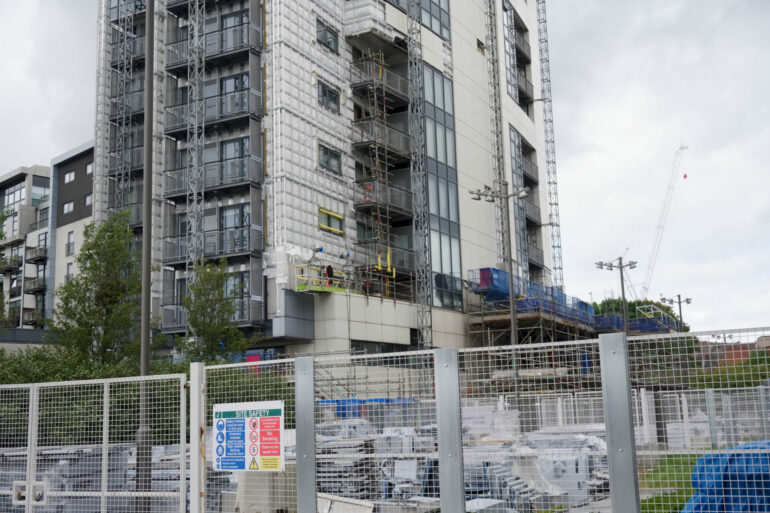In a report released today, the National Audit Office (NAO) has urged the Government to publish a target date for the completion of dangerous cladding remediation works and provide greater transparency on remediation performance.
The independent spending watchdog’s recommendations featured in its first report on the Government’s remediation portfolio since five different programmes were brought together into a single portfolio in 2023.
The NAO’s report follows the publication of the Grenfell Inquiry in September, which examined the root causes of the fire in June 2017 that resulted in the deaths of 72 people.
The NAO examined how well the Ministry of Housing, Commmunities and Local Government (MHCLG) has maximised the identification of unsafe buildings.
The Government has changed the types of buildings within scope for its programmes, and its approach to remediation, as the scale and impact of the cladding problem has become clearer.
It now has programmes to address dangerous cladding for all the estimated 9,000 to 12,000 buildings over 11 metres it considers need remediating.
There has been a substantial increase in remediation activity since the NAO’s 2020 Investigation into remediating dangerous cladding on high-rise buildings.
So far, 4,771 buildings have been brought into the portfolio, but it is taking longer than expected to identify the remainder, and some may never be identified.
With a potential 7,200 buildings or more (up to 60%) still to be identified, many people still do not know when their buildings will be made safe, contributing to residents suffering significant financial and emotional distress.
While building owners are responsible for fixing their buildings, engagement with Government’s grant programmes is voluntary.
As the NAO previously reported, incomplete building records, construction materials that differ from those on plans, and difficulties tracing owners can make identifying affected buildings difficult.
Seven years after Grenfell, 98% of estimated high-rise buildings over 18 metres with dangerous cladding are in the portfolio.
Mandatory registration of high-rise buildings under the Building Safety Act 2022 is helping to identify any that remain.
There is no mandatory registration for medium-rise buildings, 11 to 18 metres, and the Department said some building owners may be reluctant to engage for fear of uncovering problems out-of-scope for Government funding, while others may lack the time and knowledge to navigate the process.
Of the 4,771 medium-rise buildings in the Government’s portfolio – the equivalent of 258,000 homes – remediation work has yet to start on over half, is in progress for a fifth, with around one third complete.
Of all 9,000 to 12,000 potentially in scope, work is complete for only 12 to 16%.
The report found, in total, it will cost an estimated £16.6bn to fix unsafe cladding on all buildings over 11 metres in England.
MHCLG expects to provide £9.1bn of this, with the remainder funded by developers who have agreed to remediate buildings they developed, private owners or social housing providers.
To keep taxpayer contributions within a £5.1bn cap over the long-term, MHCLG plans to recoup £700m through refunds from developers for remediation works the taxpayer has already funded, and around £3.4bn from a new Building Safety Levy.
The levy will be paid by developers on new developments, though MHCLG is yet to confirm payment mechanisms.
It does not expect to introduce the levy until autumn 2025 at the earliest.
MHCLG acknowledged there may be overlaps between its remediation programmes and wider government priorities, from decarbonisation to building new homes, and the NAO report found MHCLG needs to do more to ensure that policies are not working at cross-purposes.
As MHCLG and other bodies investigate buildings at risk, they are gathering data about buildings on a national scale, which may support future government priorities, such as net zero ambitions.
Gareth Davies, head of the NAO, said: “Seven years on from the Grenfell Tower fire, there has been progress, but considerable uncertainty remains regarding the number of buildings needing remediation, costs, timelines and recouping public spending.
“There is a long way to go before all affected buildings are made safe, and risks MHCLG must address if its approach is to succeed.”
He added: “Putting the onus on developers to pay and introducing a more proportionate approach to remediation should help to protect taxpayers’ money.
“Yet it has also created grounds for dispute, causing delays.
“To stick to its £5.1bn cap in the long run, MHCLG needs to ensure that it can recoup funds through successful implementation of the proposed Building Safety Levy.”



